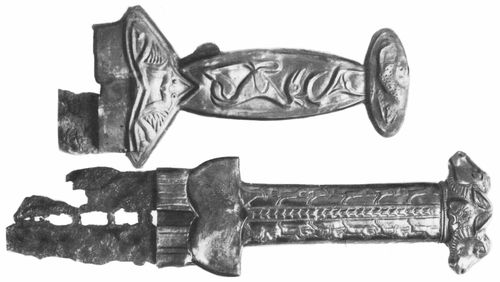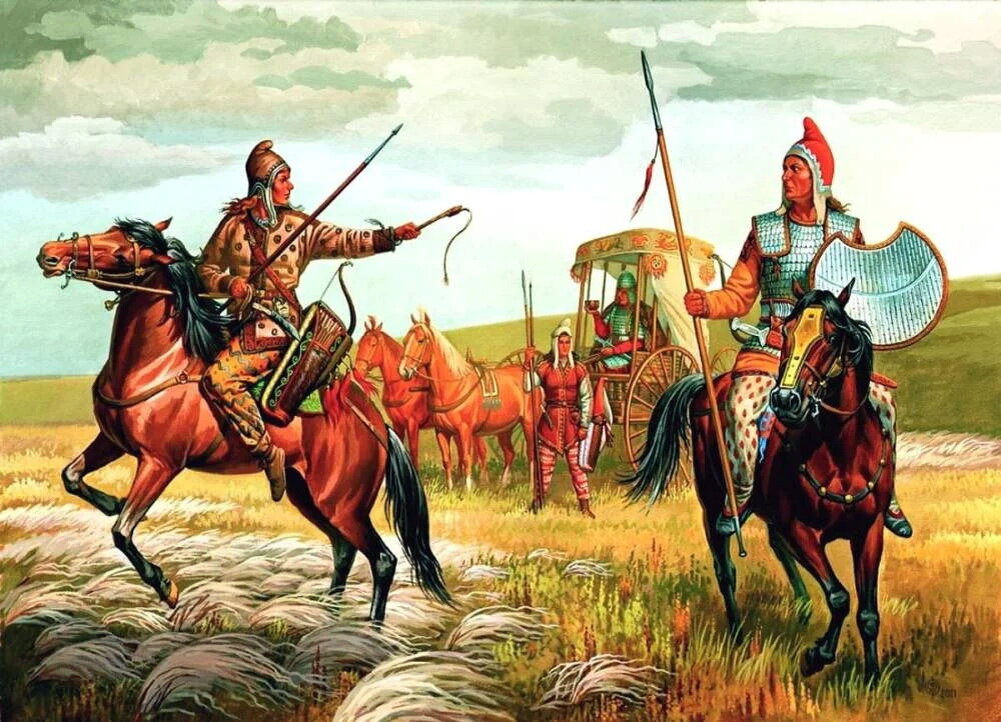The tribes of the Scythians were considered one of the most powerful forces in the territory of West Asia, the Caucasus and the Northern Black Sea region. Their main weapon was the akinak.
According to the ancient Greek historian Herodotus, the Scythians’ most significant achievement was that «none of those who invaded them could flee» and could not capture them. According to him, the Scythians did not establish cities or fortifications, but being mounted archers, they carried their houses with them. They obtained their sustenance not by farming, but by raising cattle. «How could they not be invincible and inaccessible to attack,» writes the historian. A vivid confirmation of his words was the unsuccessful campaign of a huge Persian army led by King Darius I to Scythia in 512 BC. Instead of fortified cities nomads had a well-armed disciplined army.
Historians note that the sword, being a weapon of close combat, «never played a primary role in the armament of Scythian warriors». The nomads, first of all, were famous for being excellent mounted archers. In general, the akinak took only the third place among the armament of the nomads, of course, after the bow and arrow and the spear.
The sword was more an integral part of the so-called military aristocracy, but ordinary warriors did not always have this weapon in their arsenal. In particular, that is why, as historians assume, swords are relatively rare in the famous Scythian burial mounds, apart from the fact that the burial mounds are often plundered.

The handle of a Scythian sword from the 4th century B.C. Source: wikimedia.org
Akinak, according to historians, is a Persian term used by Herodotus. According to the researchers, in the beginning it was mostly a dagger, which varied in length between 35 and 45 centimeters. However, later the akinak became longer: its average length could vary between 40 and 60 cm. In addition, it is noted that there may have been larger specimens in use. However, both short and long blades were characterized by double-edged blades tapered to the point in the shape of a triangle. Thus, the sword could deliver cutting and stabbing blows.

Types of Scythian swords. Source: wikimedia.org
However, the length of the blade did not affect the classification of the akinak in any way. The typology of this type of weapon was made depending on a certain type of crosshair and hilt tip. For example, in the 7th-5th centuries BC, various variants of rectangular or crescent-shaped tops prevailed.
Subsequently, zoomorphic decorations of tops began to appear in the design of the hilt, for example, in the form of heads of birds or horses. Crosshairs also had different types. Swords with oval (kidney-shaped) and butterfly-shaped forms were especially common. Less popular were heart-shaped crosshairs or rectangular shapes. By the way, in the manufacture of the blade, as noted by researchers, used metal with different carbon content, which made the blade plastic and flexible.

A sword decorated with gold. Source: wikimedia.org

Akinak. Source: wikimedia.org
Not much is known about the scabbard of the akinak. They were made of wood, which is why they are almost not preserved. The exception was the ends of the scabbard, which were often made of metal or bone. Very often animals were also depicted on them. The scabbards of chiefs and generally noble warriors could be decorated with gold. Speaking about the shape of the sword and the scabbard, repeating its shape, researchers often note its cultic role.
For example, scholars assumed that the Scythians correlated the sword with the «world tree», which was emphasized in its decoration. In addition, the kidney-shaped and heart-shaped crosshairs, as well as the shape of the sword itself, in the Scythians’ view could correlate with the phallic symbol. As a confirmation of this theory, historians pay attention to the corresponding images of the male organ on the statues. Besides the Scythians, the akinak was used in India and Persia. For example, in the 5th century B.C. this sword was in the arsenal of the sedentary peoples of the Middle and Near East, and they fought with such blades in Central Asia.
